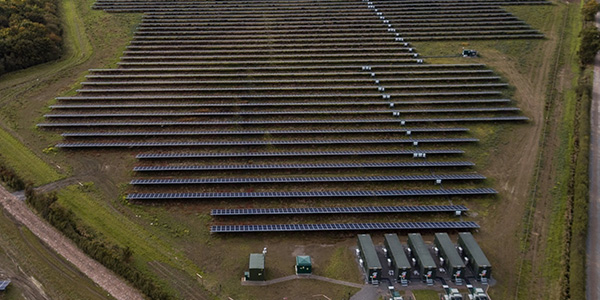FERC accepted NYISO rules allowing an energy storage resource (ESR) to participate in the wholesale markets with wind or solar as a co-located storage resource (CSR) (ER21-1001).
“We find that these tariff revisions will enhance the eligibility and participation of CSR component resources, as well as for ESRs more generally, in NYISO’s energy, ancillary services and capacity markets,” the commission said in its order March 30.
NYISO’s tariff revisions will allow an ESR to share a common point of injection with a wind or solar intermittent power resource (IPR).
The commission said the ISO’s proposed bidding construct will permit a CSR component to indicate when the IPR will be used to charge the ESR; when an ESR co-locating with an IPR will be eligible to provide operating and regulation services; and when an ESR participating in a CSR will retain its ability to operate consistent with scheduling and dispatch instructions even in scenarios where its paired IPR over produces its forecast.
FERC also accepted the requested March 31 effective date for new definitions and revisions to interconnection rules and installed capacity mitigation rules. The remaining tariff revisions will be effective in the fourth quarter, following testing of software changes to permit CSRs to participate in its markets. The commission ordered an informational filing on the status of the transition Aug. 1.
On March 11, the ISO kicked off an effort to create a market participation model that would allow an ESR and multiple generators to share the same point identifier and act as a single resource. The project is slated for completion by year-end. (See NYISO Prepares Hybrid Storage Aggregation Model.)
No More MOPR
Commission Chairman Richard Glick concurred in a separate statement “to reiterate my belief that it is nonsensical to apply buyer-side market power mitigation to entities that are not buyers or that lack market power.”
Although the order applies NYISO’s existing buyer-side market power rules to co-located ESR and IPR resources, Glick said he concurred because the ISO has not proposed any substantive changes to those rules.
“But that does not mean that I have to come to terms with those rules. To the contrary, I urge NYISO and its stakeholders to move expeditiously to replace those rules with a model that moves beyond minimum offer price rules as a means for mediating the interaction between state policies and wholesale markets. In the event NYISO and its stakeholders cannot settle upon a replacement for its current buyer-side market power rules, then we will be left with little choice but to step in and establish such rules ourselves,” Glick said.
Glick made similar comments at the commission’s technical conference on capacity markets March 23. (See PJM MOPR in the Crosshairs at FERC Tech Conference.)
New York’s Climate Leadership and Community Protection Act, which requires that 70% of the state’s electric load be served by renewable resources by 2030, also requires procurement of 3 GW of storage by 2030.
Metering, Annual Charges
The commissioners found that NYISO’s new capacity market rules properly account for the physical limitations of CSR generators, noting their understanding that the revisions and additions “do not change NYISO’s buyer-side mitigation measures nor do they change a resource’s current eligibility to qualify for any exemption to those measures.”
FERC accepted NYISO’s proposal to use a single revenue-quality meter at the point of interconnection, as well as two settlement rules that are distinct to CSRs. The commission also accepted the ISO’s proposal to not assess transmission charges to an ESR for charging energy that it receives from its accompanying IPR because the two resources are sharing energy before the point of injection to the NYISO transmission grid.
The Energy Storage Association, American Clean Power Association, Alliance for Clean Energy New York and the New York Battery and Energy Storage Technology Consortium wanted the commission to direct NYISO to net out meter data associated with charging by CSRs to eliminate administrative charges for an IPR providing charging to an ESR over customer interconnection facilities.
NYISO replied that the intervenors inappropriately conflated charges for services that it will provide to generators that participate in a CSR. The ISO said it is consistent with the commission’s cost causation principles, to recover its cost of providing scheduling and dispatch services from all resources that require those services on an equivalent basis.
The commission found it just and reasonable for NYISO to recover annual administrative charges from CSRs “because it assesses these charges on the same basis that NYISO already assesses these charges to stand-alone ESRs and to stand-alone wind or solar IPRs.”





